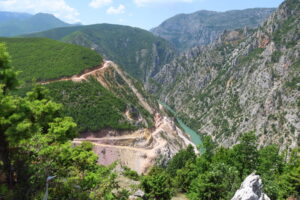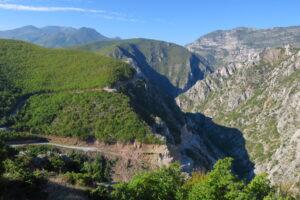The Polish Green Network is a member of 15 out of the total 24 monitoring committees of EU funds in Poland. We chair the ‘do no significant harm’ working group at the monitoring committee of the EU’s largest programme (European Funds for Infrastructure, Climate and Environment for 2021-2027 (FEnIKS)) and we coordinated work on the application of the ‘do no significant harm’ principle in the Partnership Agreement Committee 2021-2027. This gives us a unique opportunity to look at the challenges of implementing the ‘do no significant harm’ principle from the perspective of civil society, beneficiaries and the central and regional administrations.
The EU taxonomy for sustainable activities and the ‘do no significant harm’ principle were primarily designed to explain sustainability principles to investors and were not directly linked to EU funds. However, this principle was introduced to the Recovery and Resilience Facility and the 2021-2027 Cohesion Policy as a horizontal principle (i.e., it applies to all investments under these instruments). This does not mean the EU taxonomy is fully applied in EU public funding; there is no obligation to demonstrate the positive environmental impact of an investment, but only to examine the risk of causing significant harm to the six environmental objectives.
Moreover, the application of specific ‘do no significant harm’ criteria, as set out in the EU taxonomy, is not required for EU funded investments. This results in institutions and beneficiaries lacking a uniform understanding of the ‘significance’ of potential ‘harm’. The European Commission has also abandoned plans to publish dedicated ‘do no significant harm’ guidance for the Cohesion Policy. All this has resulted in a lack of a single, coherent implementation approach to this principle across EU financial streams.
Explanation of the ‘do no significant harm’ principle is included in the Polish Partnership Agreement for 2021-2027 and in the Recovery and Resilience Plan. In practice, the recovery plan and each Cohesion Policy programme are accompanied by a ‘do no significant harm’ assessment addressing its compliance at the level of types of projects, reforms or investments. ‘Do no significant harm’ compliance for specific investments and projects is ensured by the adoption of relevant selection criteria and a requirement to produce specific explanations or evidence in the application for funding.
Lessons learnt on the effectiveness and implementation of the ‘do no significant harm’ principle
The introduction of the ‘do no significant harm’ principle raised awareness about EU environmental goals but revealed several weaknesses. Loopholes allowed fossil gas investments to slip through as ‘transition’ projects. Assessments lacked clear standards, resulting in uneven quality and weak verification. Political decisions have further weakened the principle, as some projects deemed essential for EU energy security were exempted from DNSH requirements under the REPowerEU Regulation.
Implementation in Poland pointed to broader regional challenges including unclear and incoherent rules, poor coordination among managing authorities and limited institutional capacity, as an analysis conducted by the DNSH Principle Task Force within the Polish Partnership Agreement Committee for 2021-2027 confirmed. It also confirmed CEE Bankwatch’s findings on this issue: the lack of clear EU guidance and different standards for the application of ‘do no significant harm’ in different financial instruments has led to difficulties in its application. Furthermore, monitoring and compliance varied widely, with insufficient training and expertise.
Despite the obstacles, some solutions in the 2021-2027 programming period showed promise. In Poland, the ‘do no significant harm’ principle was directly incorporated into the Partnership Agreement. As a result, environmentally harmful river regulation projects intended to enable inland navigation became not eligible for funding. The monitoring committee also demonstrated its potential as a forum for collaboration between administrative and non-administrative partners, including civil society.
How to approach the ‘do no significant harm’ principle in the EU budget
Building on the experience of implementing the ‘do no significant harm’ principle in Poland in the recovery plan and 2021-2027 Cohesion Policy, a complex, unified and transparent approach should be applied in the next Multiannual Financial Framework (MFF) for 2028-2034 to address current challenges. The ‘do no significant harm’ principle should apply across the entire MFF and be based on a single, universal guidance, as proposed by the European Commission in July 2025. However, more must be done to ensure the implementation of the ‘do no significant harm’ principle. As European CSOs and Polish organisations demand, this guidance should be supported by sectoral documents containing exclusion lists of investments that cannot be financed due to their clear DNSH non-compliance (this has also been proposed by the European Commission), as well as indicative lists of selection criteria to be used in calls for proposals and evidence to be presented by applicants and beneficiaries.
Designing specific solutions for the ‘do no significant harm’ principle in the next EU MFF for 2028-2034 requires conducting a systemic, in-depth evaluation and verification of the application of this principle in the 2021-2027 Cohesion Policy and RRF across the EU. Member States should be able to use the European Commission’s Technical Support Instrument (TSI) to further operationalise the principle to, for example, explore links between ‘do no significant harm’ and national legislation or to identify good practices. The ‘do no significant harm’ principle should be linked with the partnership principle such that the guidance and related documents are consulted with experts and partners, while working groups programming the next MFF and monitoring committees should be involved in all ‘do no significant harm’ related aspects of their plans and funds. In the next programming period, educational activities about the environment should be strengthened and should include a ‘do no significant harm’ component to build the capacity of institutions and beneficiaries and increase the public’s environmental awareness.





